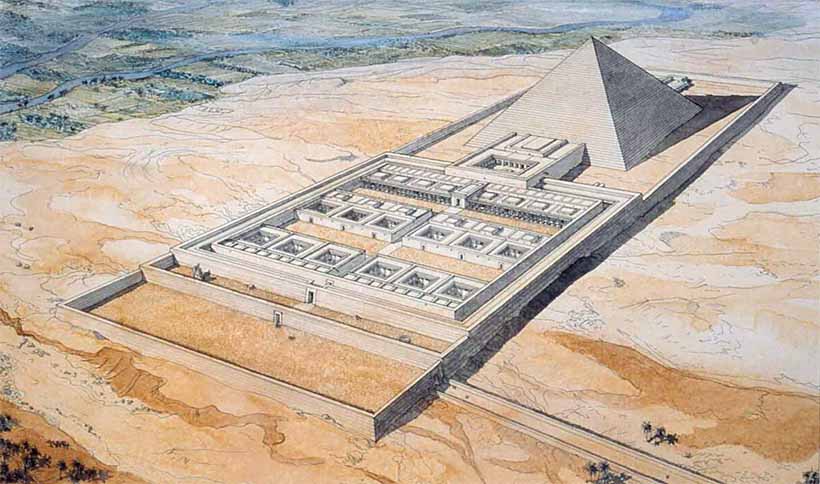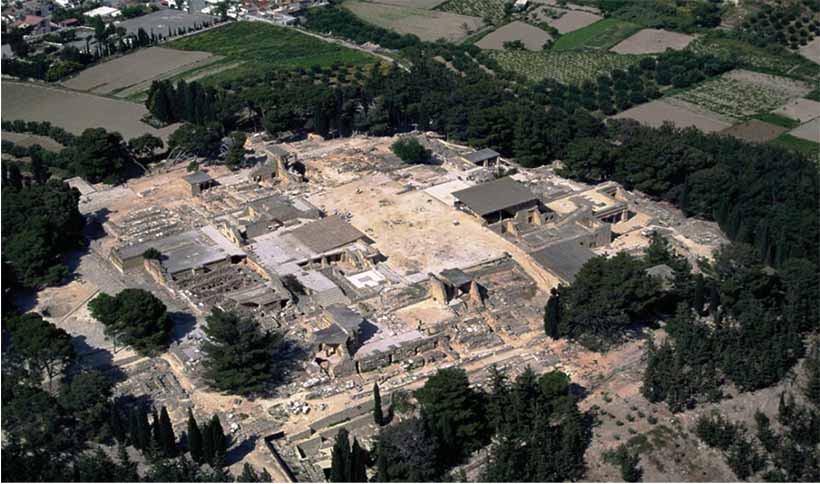What Is The Meaning of the Labyrinth And Where Does It Come From ?
The Egyptian And Greek Labyrinth

Labyrinths are mysterious and have a special meaning in psychoanalysis. Dream of a labyrinth means that the elements of a mysterious case will unravel. Being in a labyrinth means that a mystery will be solved while finding the exit of a labyrinth means that the uncertainties will find their answer. But where does this concept of labyrinth that everybody knows come from?
What is a labyrinth and what is the meaning of the labyrinth ?
The mystery of the labyrinth begins with that of his name. No satisfactory explanation has been found so far, yet many scholars have tried to give it meaning. The debate still persists among experts as to the Egyptian or Cretan or even Mycenaean origins of the Labyrinth. It was in 1739 that a professor at the college of Reims believed discerning in the word labyrinth the term BIRANTA (the Tower), which would have been according to him a building sheltering the Egyptian priests in charge of studying the celestial vault. Another genesis of the labyrinth, granted to the Egyptologist Brugsch, takes root in the phrase of seven hieroglyphs pronounced lapi-ro-hun-t. This sign sequence translates as the "temple at the outfall of the body of water" and applies as much to Egypt as to Crete. However, there is nothing to support this theory that can be found on the monuments of the Nile Valley or elsewhere.
Labyrinth of Egypt

There are more than five hundred labyrinths of all kinds in the world. One of the most spectacular and mysterious labyrinths in history is the Labyrinth of Egypt, also called the 8th Wonder of the World. This monument, which can be described as megalithic, was built under Amenemhat III, pharaoh of the twelfth dynasty, who ruled between 1850 and 1800 BC according to the current chronology. It is therefore contemporary to the Stonehenge stone circle. There are few official descriptions of the labyrinth of Egypt. It is believed to have been built 6 km to the south-east of Crocodilopolis, the city of sacred crocodiles. Unfortunately, today only a few remains of granite columns have escaped the exploitation of this monument as a quarry since Roman times. Apparently, one of the best descriptions that could be read would be due to a geographer named Strabon who would have visited it before the beginning of our era. The labyrinth would be three hundred paces long and two hundred and forty wide. It would rise on the edge of the famous artificial lake of Moeris charged with regulating the flow of the Nile, flanked at its northern extremity of the pyramid of Hawara raised by Amenemhat III. Here is an excerpt from Strabon's texts:
"I saw near Lake Moeris, near the tomb of the king who built it, this labyrinth which in no way yields to the pyramids. It is a gigantic palace divided into twelve parts, as many as provinces, or Nomes, in this country. Each of them has an equal number of rooms, contiguous and supported by heavy pillars. They are aligned along a common wall, forming a single building. Innumerable covered avenues are tangled in front of their facades, whose sinuous corridors intersect so that no stranger can find his way there or leave without a guide. The most extraordinary thing is that the ceiling of each of these rooms is made of a single and formidable stone. The galleries are also covered over their entire length of huge slabs, without any intervention of wood or other materials. If one climbs on the roof, accessible because there is no floor, one can see only a huge field of recumbent stones. This roof itself is carried by twenty-seven monoliths, besides the external supports which are just as prodigious ... "
According to legend, there is an underground floor that houses a gallery still more tangled than on the surface. Access would have been forbidden to travelers in the time of the Pharaohs and the splendor of the labyrinth. The guards refused entry on the pretext that the cellars serve as an eternal resting place for the royal tombs and as a cemetery for sacred crocodiles. The endless maze would have had as its first utility to prevent anyone from coming ransacked sarcophagi. According to Egyptian mythology, the crocodile Sobek was, like the Minotaur, the Devourer ...
A strange discovery
In July 2008, on the island of Crete, an exceptional find challenged the imagination of etymologists. An Italian archaeologist named Luigi Pernier, exhuming the fantastic ruins of the palace of Phaestos on the southern coast, discovered a strange clay object in an underground chamber that he supposed to be that of the Royal Archives. It is a kind of disc measuring sixteen centimeters and in which is engraved on each side, a spiral which is sort of like a four thousand years old five round macro-furrow. This strange object is also punching two hundred and forty-one mysterious symbols: squares, chisels, fish, leaves and flowers, scissors, men, axes ... Eminent scholars have quickly believed, wrongly, that this mysterious circular tablet holds nothing less than the key of the Labyrinth. This discovery reinforces the thesis of traditionalists who, based on mythology, place the location of the labyrinth of Crete in the vicinity of the immense cave of Gortyne, the cave of the Minotaur. Historians have traditionally shared the location of the Cretan labyrinth between supporters of Knossos, near Candia, in Greek Heraklion, and defenders of Gortyne, which lies 40 km further south.
Gortyn, home to the minotaur labyrinth
Gortyn is a huge Cretan cave, dug under a hill and located east of the village of Haghii Deka, where it is possible to explore multiple galleries that intersect each other. It is possible to get there by taking the Heraklion road towards Ambelousa and Mount Ida. Access, however, requires a difficult walk of about an hour. Classic Greek mythology associates this place with the cave of the Minotaur, half-man and half-bull monster, which was locked and kept eternally prisoner in the labyrinth by the king Minos so that nobody ever discovers its existence. Many of the graffiti that can be read on the walls of the cave date back to the Middle Ages. The stones used to build the cities of Knossos and Gortyn would come, according to some, from this career. The scholar of Tournefort, who visited these places in the early eighteenth century, leaves us a vivid description:
"... We enter this labyrinth by a natural opening seven or eight feet wide, so low that only a man of mediocre height could pass without bending over ... A kind of rustic cave appears first and does not mark nothing singular; but as we move forward, this place seems quite surprising. These are only detours, whose main alley, less embarrassing than the others, leads by a path of about 1,200 steps to the bottom of the labyrinth, two large and beautiful rooms, where foreigners rest with pleasure ... "
And his text concludes with these terms:
"We must not believe that the labyrinth we just described is the one that the Elders spoke about. "
Knossos labyrinth

In 1878, a Greek merchant bearing the predestined name of Minos, discovered with amazement the remains of the palace of Knossos. Located 5 km south-east of Heraklion, the palace of Knossos is commonly identified with the origins of the labyrinth. It took 22 years before the excavations, initiated by the British School of Athens and led by Evans, began. An asphalt road leads to the site which is left on an elevation. It is a vast five-storey complex, built around the second millennium BC, so contemporary with the labyrinth of Egypt, but which has little analogy with it except the square plan. The quadrangle of Knossos, with no less than 1300 rooms and innumerable corridors leading to a huge central courtyard, corresponds much better to the concept and traditional image that people have of the labyrinth ...









































































































































































































































































































































